In this insight paper, Director Michael Swiszczowski , Associate Director Richard Daw, and architect Catalina Ionita examine the SBTR market in the UK, looking at the potential benefits to developers, investors, operators and residents of the SBTR format and what a successful and sustainable development should include.
Two-thirds of the population of England and Wales (c.16.3 million households) live in suburban locations, and 53% of the private rented sector (c.2.3 million households), represents households living within a suburban setting.
However, the institutionally backed Build to Rent sector is 90% focused on dense urban centres, leaving the greatest share of the market as a significant growth opportunity.
The Suburban Build to Rent (SBTR) format could therefore become an even greater disruptor to the residential rental market in the UK than its urban counterpart has been.
The need for Suburban Build to Rent
We live in a challenging time where working practices and the demands of life are rapidly changing, even more so now because of the COVID-19 pandemic.
Since 2020, we have noticed a significant shift in the number of people searching for homes outside the city, or with access to more green space nearby.
Furthermore, with the UK population expected to pass 70 million within the next decade, our inability to meet the government’s annual housing supply target of 300,000 per year (i) highlights an urgent need to address the objectives and approaches of the supply-crisis solutions currently being explored and their appropriateness for people and their current needs.
The astonishingly high house prices in many towns and cities continue to make home ownership challenging for most middle-income earners, with the number of renters in the 35-64 age group having grown by 95% over the last ten years.
It is time to start thinking about how suburban, low-to-mid-rise Build to Rent developments could provide an alternative living option for middle-income families.
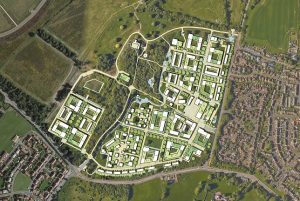
BTR developments could provide an option for middle-income families
Chapman Taylor believes the Suburban Build to Rent (SBTR) format could play a key role in addressing this structural shortage, responding to a growing demand for a different style of rental experience that is not solely focused on urban living.
Build to Rent presents an enormous opportunity to tackle the housing crisis and build the homes that we so desperately need.
British Property Federation/Savills statistics (ii) show Build to Rent is playing a key role in providing additional housing supply in the 20 cities identified by the UK Government for additional housing growth.
Suburban Build to Rent could mark an organic transition to a more inter-generational living model
(i). https://pdf.euro.savills.co.uk/uk/residential—other/suburban-build-to-rent.pdf
(ii) https://www.businessldn.co.uk/sites/default/files/documents/2022-03/Build%20to%20Rent%20Report%20London%20First.pdf
(iii) https://pdf.euro.savills.co.uk/uk/residential—other/suburban-Build to Rent.pdf
(iv) Valentine-Selsey, R., Simmie, H., & Whittaker, G. (2020, April 21). Suburban Build to Rent—April 2020. Savills. https://www.savills.co.uk/research_articles/229130/299211-0
(v) (Knight Frank, 2021) The Suburban BTR Housing Report.
(vi) (Valentine-Selsey, R., Simmie, H., & Whittaker, G. (2020, April 21). Suburban Build to Rent—April 2020. Savills. https://www.savills.co.uk/research_articles/229130/299211-0
(vii) Property Investor Today Team. (2020, December 11). Q&A – Will suburban BTR thrive as a result of Covid-19? Property Investor Today.
(viii) https://pdf.euro.savills.co.uk/uk/residential—other/suburban-build-to-rent.pdf
(ix) https://www.businessldn.co.uk/sites/default/files/documents/2022-03/Build%20to%20Rent%20Report%20London%20First.pdf
(x) (Simondson, 2021, p. 4) Simondson, J. (2021). Who likes in Build to Rent? BPF.
(xi) (Savills, 2021, p. 5) https://BTRnews.co.uk/wp-content/uploads/2021/11/SFH-2021.pdf
(xii) (Property Investor Today Team, 2020)
This model could prove more appealing to couples and families who want to live further out of the city, with access to more space and amenities while still having a sense of their own private space.
It could also mark an organic transition towards a more inter-generational living model which can highlight significant benefits when it comes to new work-from-home trends (i.e., nearby grandparents can support with childcare while parents work).
This would simultaneously make the Build to Rent product accessible to a much wider demographic and more responsive to the current housing crisis by offering a more diverse rental portfolio that suits a larger variety of needs.
What are the pros and cons of SBTR?
When looking specifically at the private rented sector (PRS), Savills estimates that more than 53% (approx. 2.3 million households) live in suburban areas (iii), although the newer developments tend to favour the high-density markets (iv).
As people start reassessing their priorities post-pandemic, space, the cost of living, commuting and the use of time have gained a lot of attention (v).
We know BTR has been a successful, resilient model
We already know that BTR has been a successful, resilient model catering for professionals and young families; a model that coped very well in the pandemic and cost-of-living crisis (robust rental collection and occupancy rates, long-term rental agreements, access to amenity space, etc).
However, it has been struggling to tap properly into the larger demographic of the PRS market (vi).
SBTR will likely see a rise in single-family homes, which could potentially attract larger families in search of additional space, both indoors and out (vii).
As ‘suburban’ BTR schemes are, by their very definition, outside city centres, they are often more affordable and attractive to a broader rental market (viii).
Differences between BTR and Suburban BTR can be attributed to their geographical location – living outside the central urban area is typically more affordable for both rental and purchase (ix).
Five years ago, the BTR market’s target demographic focused on 25–35-year-olds, however, what we see now is that as these people mature (alongside a more established BTR market in the UK), they will naturally seek to gain access to more family-orientated provisions such as shared gardens, allotments, playgrounds, exercise areas and community centres (x).
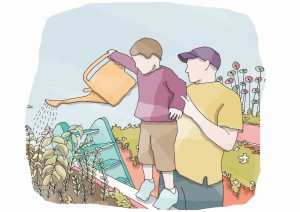
The BTR market will need to provide access to family-oriented provisions like allotments
This is the natural evolution of the residents of tomorrow, ‘Generation Rent’ as they are often called.
Therefore, we can start thinking about future trends and what replaces traditional equity gained by owning a home.
If people who have rented their entire lives retire, how do they invest?
In our attempt to understand our Generation Rent customers, we believe they want to be flexible, and light-footed, that they want to have the freedom to take a job abroad for six months if the opportunity arises and to not be tethered to a physical location.
We foresee they are more likely to consider other investment opportunities such as investing in crypto currencies, tech companies or micro-share transactions, often facilitated through their smartphone.
As people become more comfortable with renting, or opt to embrace this lifestyle from the outset, there must exist a rental product that is designed specifically to suit their needs and lifestyle as they mature to the later stages of their lives. This has the potential to progress to later living in a natural evolution of curated living (xi).
It is important to note the challenges of the model as well.
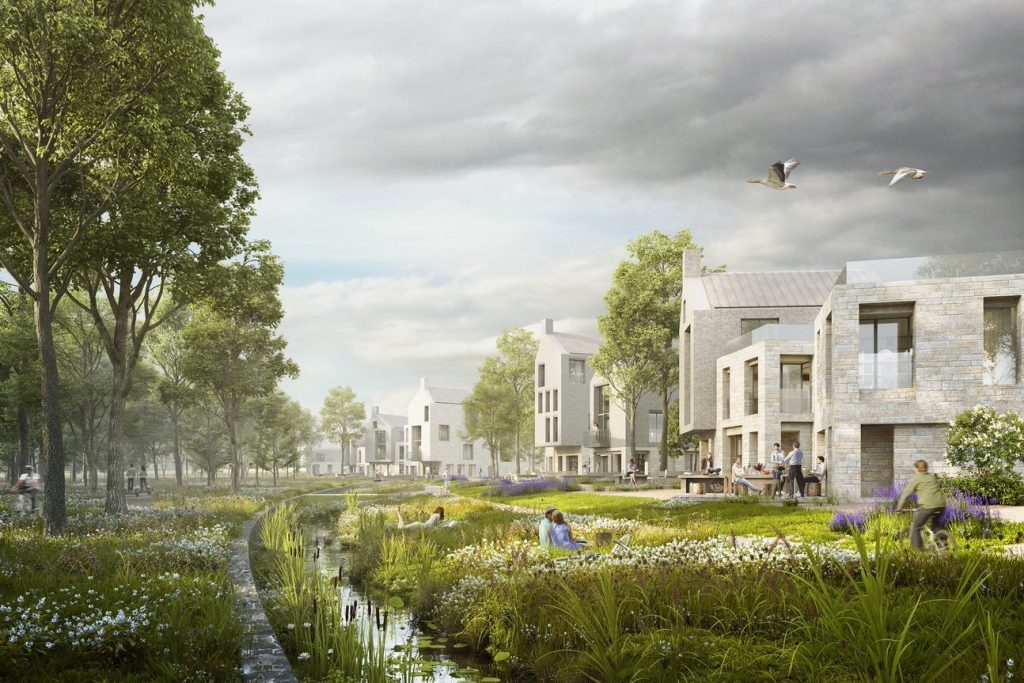
There must be a product for ‘generation rent’ as they mature to the later stages of their lives
With SBTR being a relatively new form of managed or serviced rental accommodation, people have higher expectations about the quality of their homes and the level of service provided by the operator.
This requires developers, operators and designers to carefully consider lifetime operational and maintenance requirements when developing proposals for these environments.
SBTR in the UK currently relies heavily on cars due to the reduced availability of public transportation in many suburban areas.
Ensuring access to road infrastructure around the development is an important aspect developers will need to consider.
Furthermore, since the main demographic group is single families, further social infrastructure might be required, including nurseries and schools, GP clinics, dentists and supermarkets.
However, these are all challenges developers can control with the acquisition of the right site (xii).
What should a successful and sustainable SBTR development provide?
The key to a successful BTR scheme is to design with the consumer’s needs at the core.
In the case of SBTR, the approach should not be any different and should focus on the target demographic and their needs.
We believe this methodology must start at the drawing board. As architects and master planners, we can influence the way a place is shaped, and we can take an active role in developing a collaborative vision for the project that is focused on the customer experience.
The principles are simple: The communal areas of buildings in urban settings (lobbies, corridors, or other internal shared spaces) translate to areas such as streets, squares and landscaped spaces in a suburban context.
These are the places where members of the community can engage with one another, which is why their design is of such key importance.

SBTR must consider the design of the public realm
The design of the public realm needs to be carefully considered and, as with any feature that adds a higher level of quality, service or amenity, it is important to understand the relationship between cost, ongoing operational expenditure and the potential value or return which could be generated.
It’s about providing a sense of place and acknowledging there is a responsibility to consider opportunities for community engagement.
This focus on placemaking helps to connect the domestic-scale architecture through interlocking pedestrian and cycle routes, clever and playful landscaping, and considered vehicular routes and parking that don’t overpower the street scene.
Playfulness can be subtle and unique in a way that helps to provide visual and sensory experiences.
We can also start to incorporate more flexibility into the product; the BTR model anticipates a premium could be applied (within multi-family) for apartments that are pet friendly (suggested circa 10%).
We have a growing portfolio of mature BTR schemes and we know residents are willing to pay circa 11% more for pet-friendly homes, sometimes even if they do not have pets yet themselves. This data allows us to anticipate this aspect to become even more important within SBTR, where greater flexibility to accommodate a desire for more space and outdoor amenity is key.
The main objective is to create a safe and inclusive neighbourhood that engenders civic pride among a diverse and multi-generational demographic. Identity and feeling are as important to the vision as architecture and landscape.
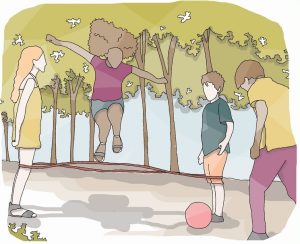
The objective is to create a safe and inclusive neighbourhood
When we design, we want to allow our values to guide every aspect of the scheme, ultimately allowing us to create a place that can be shared and shaped by the community, as well as being sustainable, safe, and stimulating.
Can we still learn from the US market?
In the US, multi-family started with a focus on urban living, just like here, and is now shifting its focus to the single-family market.
However, a key distinction is that a lot of that stock was purchased following the global financial crash, meaning that the resultant product is not designed for rental, which we believe should be the foundation for any Build to Rent scheme.
Much of the US BTR stock was not designed for rental
The advantage is that we can perhaps develop a better product, and more importantly, one that is suitable for UK culture and lifestyle.
US BTR developments are concentrated in key locations, with single-family homes following the same strategy; this is something we have found within our work with suburban BTR clients.
As outlined by Urban & Civic’s Development Director, Caroline Foster, we learned that desirable locations for UK SBTR are within a one-hour commuter radius from London, particularly around Cambridge and Oxford.
This is due to further employment opportunities based around the life science and technology sectors, as well as opportunities expanding from the academic campuses.
Chapman Taylor’s prototype SBTR community
The ground-breaking template
Based on our BTR experience, we have been invited to develop a design concept for a prototype SBTR community.
Working closely with the operator from the outset has been incredibly beneficial, allowing us to collaboratively develop the vision and model for the project.
Customer experience and commercial viability have been at the heart of every design decision made, creating a place that will be collectively shared but also collectively shaped, by its residents and by the dynamics of the community.
This new concept offers a ground-breaking template for communal living.
The development aims to create a sustainable communal experience for the occupants, in a radical departure from the traditional compartmentalised residential developments which have become the norm.
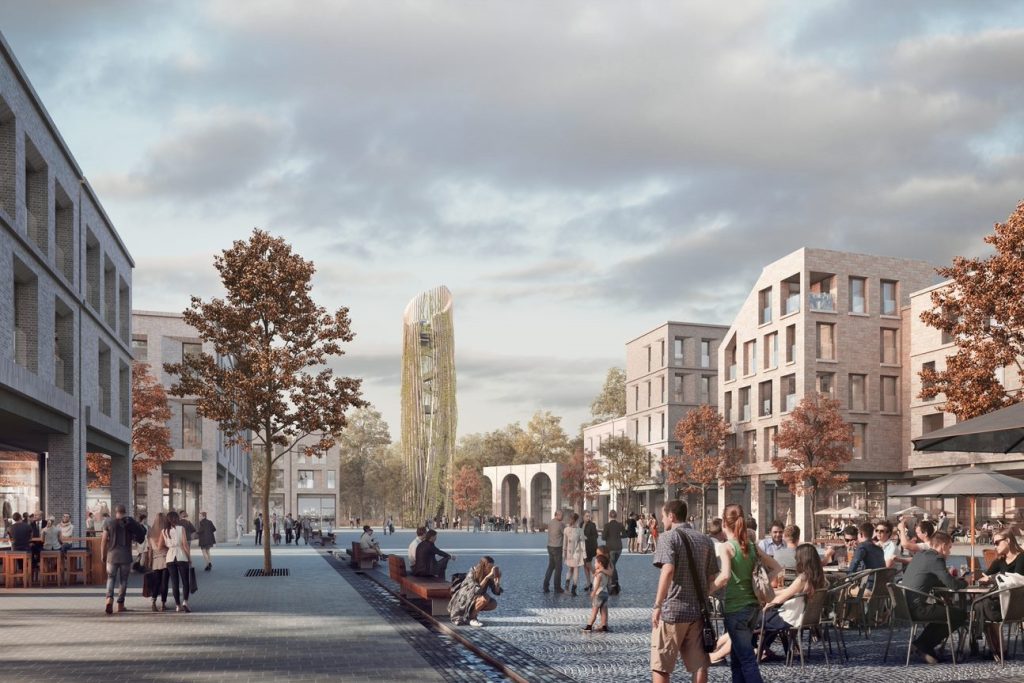
Suburban BTR: A pedestrian-friendly neighbourhood which encourages cycling and the use of public transport
The scheme aims to create a unique and high-quality, attractive, and well-considered place for people to inhabit and enjoy with pride. Key to this will be an emphasis on healthy living – encouraging walking, cycling, and environmental sustainability.
The history of the site is very important to us, performing a critical role in the placemaking strategy for the project.
The development will be a pedestrian-friendly, walkable neighbourhood that encourages cycling and the use of public transport.
Home zones and play streets will be the standard street typology, with active frontages designed to create a place that is safe, fosters a sense of community and encourages street life.
As such, all boundaries are blurred to encourage neighbourly interaction, further emphasising the communal nature of the entire development.
The masterplan aims to create a unique environment that responds to the site’s features while meeting the requirements of the different stakeholders.
A flexible community square, as a centrepiece, is designed to also accommodate events and other uses, as required. It will be anchored by a café and workspace to one end and a flexible community space and library to the other, offering opportunities for various events and activities to happen.
Hard and soft gathering spaces will encourage play and social interaction – light structures within landscaped spaces, for example, could be used for performance events or as an artists’ retreat.
Ultimately, our scheme will be flexible and adaptable, allowing it to be largely shaped by those who live and work within it, but it will also be able to respond, in design and management terms, to the ever-changing needs of its community.
While we wish our developments to be as flexible as possible, we must simultaneously weave in elements of standardisation
Where standardisation is key
While we wish our developments to respond to their communities and be as flexible as possible, we must simultaneously weave in elements of standardisation.
From the external architectural form to the interior design, SBTR schemes must allow the operational management and ongoing maintenance to be as streamlined as possible for them to be economically viable.
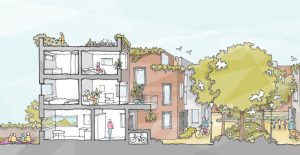
Operational management and maintenance must be streamlined
We understand the importance of having a clear strategy for refuse collection, grass cutting, window cleaning, replacement of damaged goods, and agreements for adopted and non-adopted roads. Good design can limit the impact of these ongoing maintenance tasks on the overall operational costs.
At Chapman Taylor, we pride ourselves on our collaborative way of working, and it is important, especially on a SBTR scheme, to engage early with the landscape consultants.
Access to bins, cycle storage, parking locations that allow for 100% e-charging, and the efficient distribution of private and non-private external amenity spaces are crucial to the successful delivery of a scheme.
Simple questions like ‘who cuts the grass?’ and ‘where is the lawnmower kept?’ need to be answered with the full agreement of the management organisation.
We must continuously consider our responsibilities to reduce embedded carbon and look to innovative ways to help with operational carbon reduction.
The design community now is targeting zero carbon and zero bills as the ultimate goal, and the SBTR sector is well placed to embrace this thinking through the use of Modern Methods of Construction.
Our design approach aims to adopt best-practice thinking and technology combined with a progressive design for communal living.
A key aim is to create a community made dynamic by the diverse and multi-generational nature of the demographic.
This will not only allow many needs to be fulfilled from within the community, be it babysitting, carpooling, or sharing gardening equipment, but will also provide a sense of belonging which is often absent in owner-occupied developments.
We strongly believe that this will be very much a stakeholder-led community experience – a new type of community that unites and inspires its residents and provides a special living environment. It will foster cross-generational social interaction and harness nature as a means of providing recreation and healthy, sustainable living.